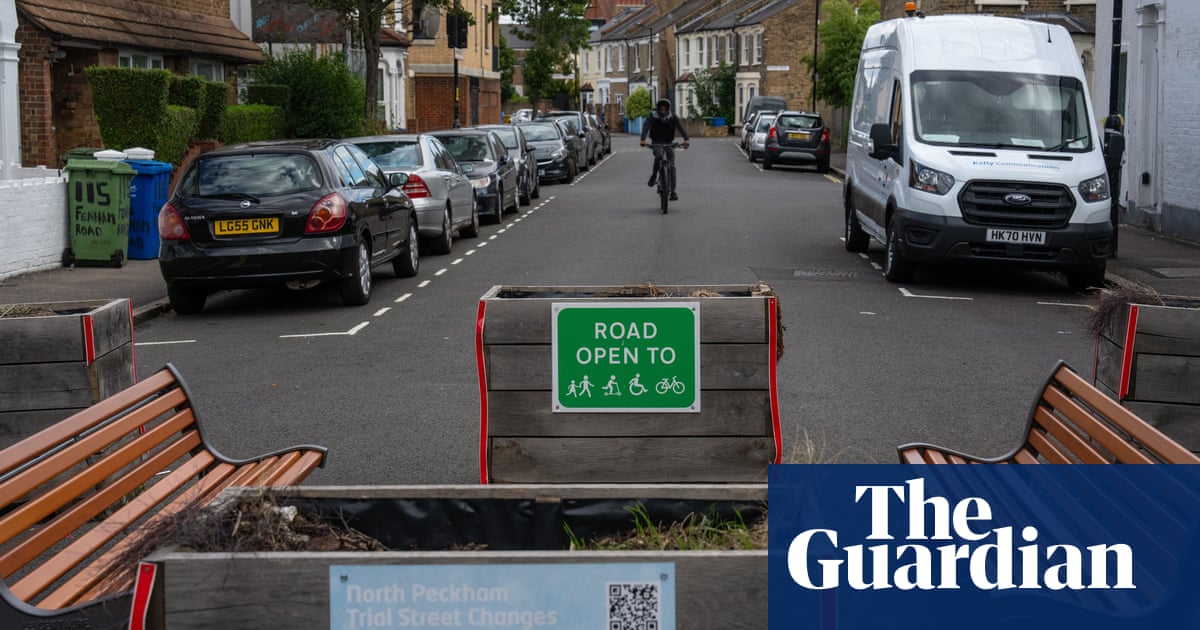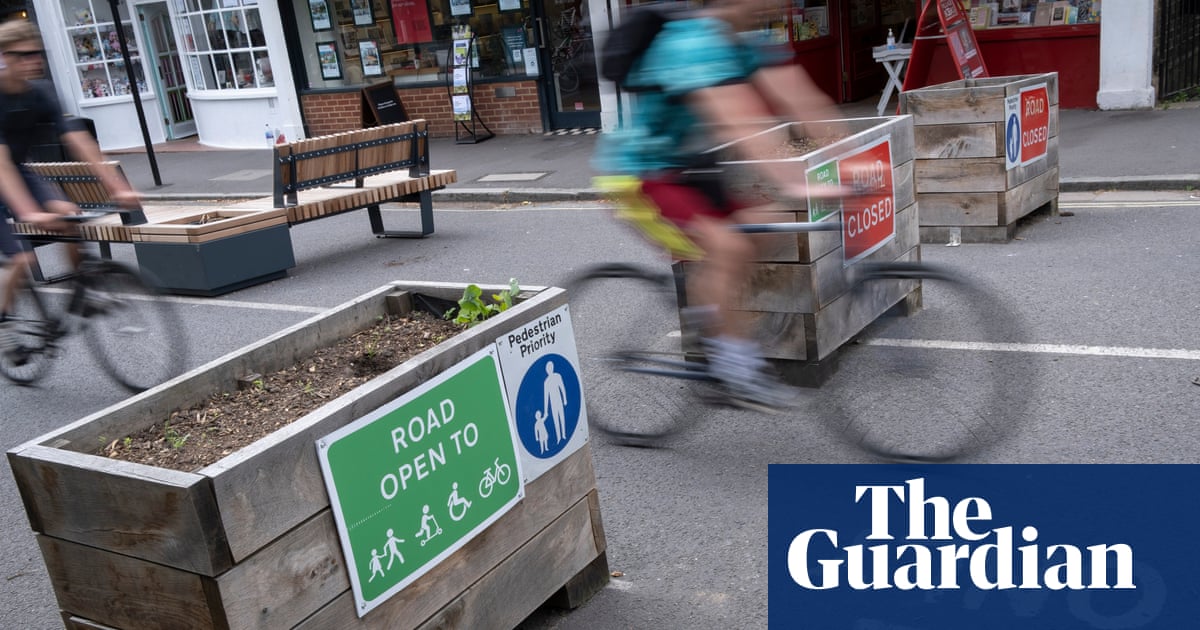
Thousands of England’s quiet residential streets and housing estates risk being opened up as rat runs under the government’s review of so-called low-traffic neighbourhoods (LTNs), prompting alarm from campaign groups.
Two weeks after Rishi Sunak announced he had ordered an inquiry into LTNs amid a pushback against what he termed wider “anti-motorist” policies, the Department for Transport (DfT) is still refusing to say who will run it, or when it will begin work.
However, officials have confirmed their working definition for LTNs, a term coined during Covid for to describe modal filtering, a longstanding traffic measure in which some streets are kept as through routes for pedestrians and cyclists but motor vehicles can only access them from one direction.
The DfT says it considers an LTN to be any scheme where through-motor traffic in residential streets is prevented through either camera-enforced signs or by physical barriers such as bollards or planters, with no date given for when they were installed.
This takes the scope of the review well beyond the 200 or so LTNs created in the UK from 2020 to 2022, raising the possibility that officials could order the removal of bollards, gates and other traffic-reduction measures in place for decades.
Such physical barriers have been a routine part of traffic planning since the 1960s, with most postwar housing estates specifically designed to limit through-traffic. One study suggested that more than 25,000 modal filters exist across the UK.
The DfT’s plans have prompted alarm among active travel groups, which said they were likely to be unpopular with residents, and that a wholesale opening up of historically quiet streets to rat-running traffic would hamper efforts to get people walking and cycling.
“LTNs is just a shiny new name for a very long-established idea,” said Simon Munk, the head of campaigns for London Cycling Campaign. “We’ve seen modal filtering since the advent of the motorcar. Pretty much every housing estate since the war was built on the principle of not allowing through traffic. Is there a cut-off date for any of this?
“It’s a culture war wedge issue, fomented by politicians who seemingly want to distract attention from bigger woes.”
Tim Burns, the head of policy for Sustrans, said: “While the term LTNs was popularised during the pandemic we need the government to show greater understanding that similar schemes have been around for years, that many people already live in them, and are happy to do so.
“Local authorities have, since the 1970s, worked to reduce through-traffic on residential roads, including things we’re all used to seeing: bollards, one-way streets, and cul-de-sacs. In fact, ‘LTNs’ are older than our current prime minister and are routine for new housing developments.”
Sarah McMonagle, the Cycling UK director of external affairs, said: “Very few people would want more traffic on the streets where they live. For decades, communities across the country have supported local schemes designed to reduce through traffic in residential areas.
“Political opportunism, culture wars and selective hearing seem to have convinced the PM this review will be popular, but it’s hard to see what he’ll achieve other than stirring up conflict around a cycling and walking policy success that he should be proud of.”
Some transport officials are understood to have been baffled by Sunak’s decision to order the review, part of the prime minister’s attempts to use green policies as a wedge issue with Labour.
Complicating matters further, earlier this year the DfT commissioned another review into LTNs and separated cycle lanes, to be conducted by academics from Westminster University. The DfT confirmed the review ordered by Sunak was separate, but declined to say what would happen to the Westminster study.












